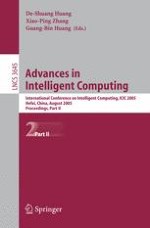The International Conference on Intelligent Computing (ICIC) was set up as an annual forum dedicated to emerging and challenging topics in the various aspects of advances in computational intelligence fields, such as artificial intelligence, machine learning, bioinformatics, and computational biology, etc. The goal of this conference was to bring together researchers from academia and industry as well as practitioners to share ideas, problems and solutions related to the multifaceted aspects of intelligent computing. This book constitutes the proceedings of the International Conference on Intelligent Computing (ICIC 2005), held in Hefei, Anhui, China, during August 23–26, 2005. ICIC 2005 received over 2000 submissions from authors in 39 countries and regions. Based on rigorous peer reviews, the Program Committee selected 563 high-quality papers for presentation at ICIC 2005; of these, 215 papers were published in this book organized into 9 categories, and the other 348 papers were published in five international journals. The organizers of ICIC 2005 made great efforts to ensure the success of this conference. We here thank the members of the ICIC 2005 Advisory Committee for their guidance and advice, the members of the Program Committee and the referees for reviewing the papers, and the members of the Publication Committee for checking and compiling the papers. We would also like to thank the publisher, Springer, for their support in publishing the proceedings in the Lecture Notes in Computer Science series. Particularly, we would like to thank all the authors for contributing their papers.
